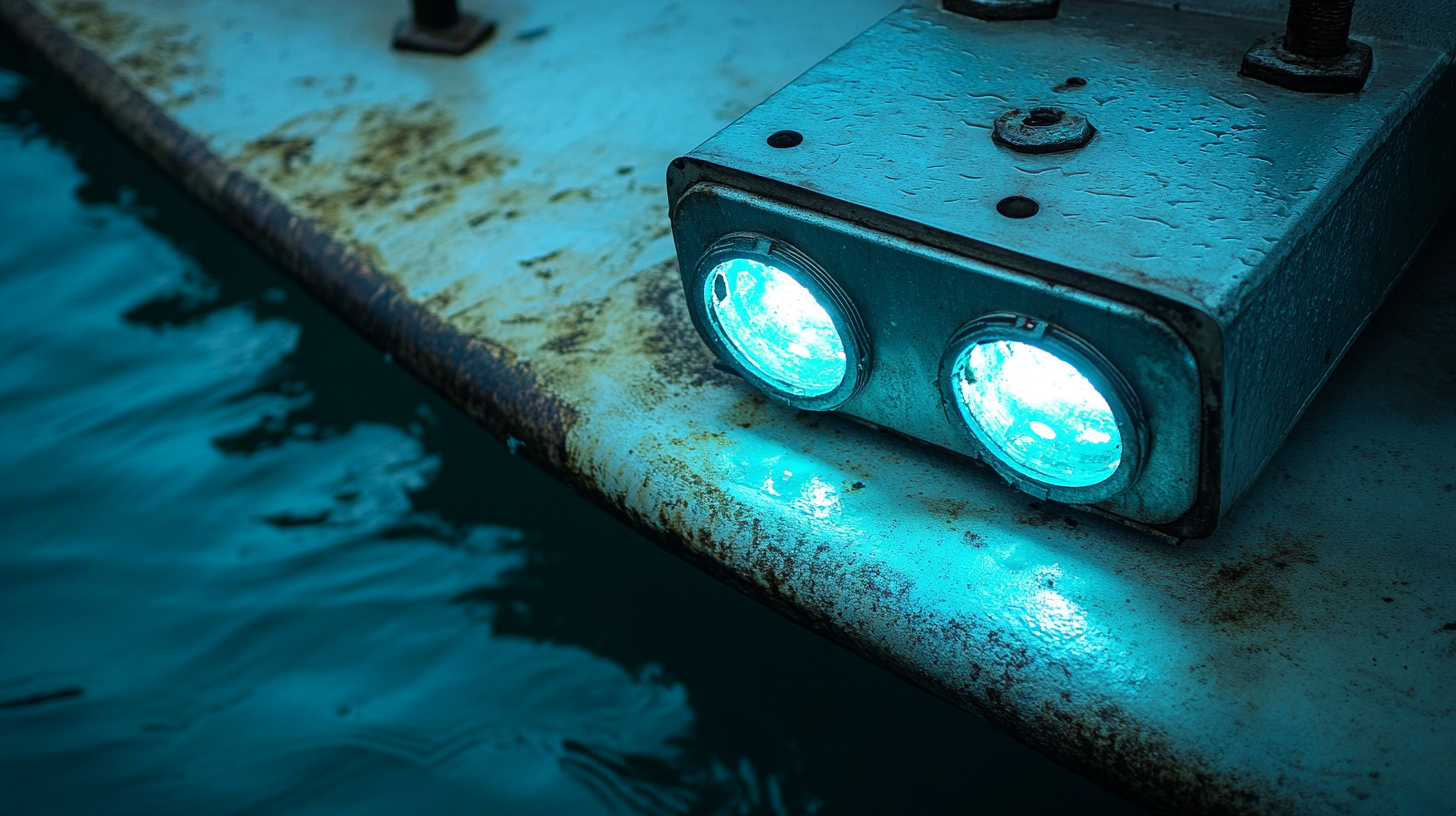How to secure underwater boat lights against theft and tampering
While underwater boat lights add style, safety, and visibility to your vessel, they also present certain vulnerabilities. Understanding these vulnerabilities is the first step in ensuring effective theft prevention. When mounted below the waterline, these lights are often out of sight, making them an easy target for thieves or vandals who can tamper with them unnoticed, especially when your boat is docked or stored. Boating safety can also be compromised if these lights malfunction due to tampering, as they play a key role in illuminating the surrounding water for night navigation.
A major weak point lies in the hardware and installation method used for securing these underwater lights. Standard mounting brackets, screws, and clamps can be quickly undone using basic tools, providing little resistance to someone looking to remove the lights. Some underwater lights even have exposed wiring, which can be easily snipped, disabling the light entirely and making repairs expensive.
Additionally, saltwater exposure can play tricks on your boats’ security. Corrosion from constant contact with saltwater weakens seals and fasteners, making it more likely for your lights to loosen over time, even if they haven’t been directly tampered with. This ongoing wear-and-tear gives opportunistic thieves a window to strike when your fixtures are already weakened. An often-overlooked vulnerability involves boat lifts and platforms: when boats are raised from the water, they often leave lights exposed and easier to access.
By understanding these common risks and integrating proper security solutions, you can prevent headaches — and costly replacements later on. Taking some proactive measures now will ensure that your underwater lights stay in place and continue enhancing your boating experience, rather than flashing as a calling card for thieves.
Choosing tamper-resistant light fixtures and hardware
When it comes to theft prevention, investing in the right light fixtures and hardware is crucial for making sure your underwater lights stay exactly where they belong – on your boat, not in a thief’s hands. Look for tamper-resistant fixtures specifically designed to deter unauthorized removal. These fixtures usually feature innovative locking mechanisms, making it difficult for anyone with basic tools (or sticky fingers) to pry them free. Instead of using standard Phillips or flathead screws, opt for hardware designed for security, like tamper-proof bolts or screws that require special tools to remove. Anyone planning to swipe your lights will think twice before diving in – literally – when they realize they don’t have the gear to get it done.
Another essential factor is choosing lights made with robust, corrosion-resistant materials like stainless steel or anodized aluminum. This not only helps the lights endure the harshness of saltwater environments but also ensures that they stay securely fastened, even as marine conditions deteriorate standard materials. Lesser-quality mounts and screws are more vulnerable to rust and breakage over time, effectively “helping” thieves do their dirty work by making the lights easier to strip away. Quality fixtures may cost more upfront, but their long-term performance and contribution to security can save you big in replacement costs and frustration down the road.
Also, consider integrated wiring options that hide or shield the cables—because exposed wires are an open invitation for thieves. It’s as simple as “snip, snip” for them if your lights have accessible wiring. Lights that feature hidden wiring channels or armored cables, on the other hand, offer another layer of protection. If the thief can’t get to the wire, they can’t disable the light before attempting to remove it, making your whole setup that much harder to tamper with.
While aesthetics might be important when choosing your underwater lights, remember that appearance means nothing if your lights go missing. Focus on choosing a design that merges great boating safety features with heavy-duty security measures to protect your investment. Whether you’re upgrading your current setup or buying new lights, look at the details: high-security locks, concealed or toughened wiring, and hardware engineered to resist both marine conditions and unwanted attention. Your boat will still look stunning in the dark, and would-be thieves will leave empty-handed.
Installing security systems and tracking devices
Taking your theft prevention efforts up a notch with advanced security systems and tracking devices can significantly improve the security of your underwater lights. Just like home security systems offer peace of mind, installing marine-specific security systems on your boat can deter potential thieves from even attempting to mess with your equipment. Many of these systems come equipped with motion sensors, alarms, and even cameras, making it nearly impossible for someone to tamper with your underwater lights without being noticed. A loud alarm or blinding flash of light triggered by a motion sensor can be all it takes to scare off thieves before they even have the chance to reach for their tools.
Beyond just sounding alarms, modern security systems can also be linked to your phone, allowing you to monitor activity around your boat in real-time. This means you can receive instant notifications if anything suspicious occurs while you’re away, giving you a chance to call local authorities if necessary. Some systems even integrate GPS tracking, letting you know the exact position of your boat or any detached equipment in the event of theft. If someone does manage to detach an underwater light, you could potentially track it down once it surfaces, helping you recover your stolen property. Keep an eye out for systems that combine these features with long battery life and wireless connectivity for reliable operation even in remote locations.
In addition to security systems, RFID (Radio-Frequency Identification) and GPS tracking devices are becoming increasingly popular in theft prevention. These small devices can be discreetly installed within or near your underwater lights, offering an extra line of defense. If the unsavory attempt to steal your gear does occur, tracking technology provides precise information on its last known location. This not only raises the chances of recovering the stolen lights and catching the thief, but it’s also proof you’re serious about protecting your investment. Some of the more sophisticated systems also offer geofencing, which means you can set a virtual perimeter around your boat. If your underwater lights (or any other component) leave this perimeter, you’ll get an instant alert on your phone or email before it’s too late.
While GPS tracking devices and alarms are more obvious choices for securing the area around your boat, consider also employing hidden cameras or infrared sensors to monitor activity at night. Many newer marine security cameras are designed to perform optimally in low-light underwater conditions and can keep thieves from working in dark areas unnoticed. Just the sight of a clearly visible camera can act as a deterrent, and hidden cameras provide an additional layer of protection for when a criminal might feel confident they aren’t being watched. Remember: the goal is to make it as difficult and risky as possible for anyone to tamper with or steal your underwater lights.
While these measures might sound high-tech and expensive, prices have dropped considerably in recent years, making it more accessible for everyday boat owners to install marine security systems. Given the high cost of replacing underwater lights—not to mention the hassle—it’s certainly an investment worth considering for the sake of boating safety and enjoyment. By integrating an effective security system with real-time notifications and tracking technologies, you won’t just be protecting your boat—you’ll also be putting your mind at ease.
Using anti-theft tools: bolts, screws, and adhesives
One of the simplest yet most effective ways to boost the security of your underwater lights is employing specialized anti-theft tools designed to resist tampering during attempted theft. Reinforced bolts, screws, and high-strength adhesives provide extra layers of protection that could stop would-be thieves in their tracks. Standard bolts and screws, typically found in basic underwater light setups, can be removed with little more than a wrench or screwdriver. However, switching these out for tamper-proof alternatives can make the theft process far more difficult.
First, consider using tamper-resistant bolts or security screws, which require special tools to remove. Options like tamper-proof Torx® screws or hex head screws with a central pin are excellent for this purpose. These screws transform a simple task for thieves into a time-consuming challenge, as they would not have the necessary tools on hand. Below is a comparison of standard versus tamper-proof hardware:
| Standard Hardware | Tamper-Proof Hardware | |
|---|---|---|
| Removal Tool | Common tools (e.g., Phillips, flathead) | Specialized tools (e.g., Torx®/hex bits with pins) |
| Removal Time | Short (1–2 minutes) | Longer (requires unique bit, more time) |
| Difficulty Level | Easy | Challenging |
Alongside security screws, locking nuts or thread-locking compounds such as Loctite® can significantly reduce a thief’s ability to loosen and remove your boat lights. Locking nuts prevent easy unscrewing, requiring more advanced knowledge (and specialized tools) to break the security system. Combined with thread lock adhesive, your lights will be far more difficult to remove. Thread-locking compounds harden when applied to fasteners, sealing the bolt into place and resisting loosening from vibration or tampering. This is particularly important for underwater lights that may wiggle over time due to water movement, ultimately loosening the hardware on their own or providing easier access for opportunistic thieves.
Additionally, marine-grade adhesives, like industrial-strength epoxy and polyurethane adhesives, can be used to bond light housings directly to the hull. Once cured, these adhesives are not only extremely resistant to pulling, twisting, or prying forces but are also highly water-resistant – crucial for any underwater application. By using these adhesives in conjunction with physical fasteners, such as tamper-resistant screws, you create a double layer of theft prevention that deters potential criminals. They would have to break through not only the fasteners but also the hardened adhesive, further complicating their task.
For those prioritizing boating safety, it’s also essential to ensure that all withstanding adhesive and fastener options don’t affect heat dissipation or corrode easily in saltwater environments. Many top-tier adhesives are marine-rated, designed to handle corrosion, high temperatures, and all the harsh conditions your lights will encounter underwater. However, apply adhesives carefully—improper use may permanently bond objects in place to the extent that even you, the owner, may struggle to remove a light for maintenance or repair.
Whether you’re looking to upgrade existing fixtures or start fresh with new ones, anti-theft bolts, screws, and adhesives should be a priority for long-term security. While no method can offer 100% foolproof protection, layering your approach with these tools dramatically improves your odds against theft or tampering while your boat is docked or stored. Combined with the methods detailed previously, such as tamper-resistant housings and security systems, these additional measures go a long way toward ensuring that your underwater lights remain securely attached and functional.
Regularly inspecting and maintaining your underwater lights
Even with all the high-tech security solutions and tamper-resistant hardware installed, the simplest method for maintaining security and theft prevention is routinely inspecting and maintaining your underwater lights. Regular checks not only ensure the lights are still securely attached to your boat but also help you spot any early signs of tampering or corrosion before bigger issues arise. After all, even the most advanced security system can’t protect neglected gear that’s rusting, coming loose, or damaged.
First, make it a habit to inspect the lights both during boating season and when your boat is in storage. Look for any unusual wear on the fixtures, screws, or bolts. Saltwater has a sneaky way of creeping into small cracks, causing corrosion that can weaken hardware. Loose screws or mounting brackets become a thief’s best friend, so paying attention to these points will help keep your lights intact. Adjust anything that feels even slightly loose, as unsecured lights can easily fall victim to opportunistic thieves who are always on the lookout for easy targets.
Check for damage to the wiring as well, particularly if your lights don’t have armored or hidden cables. Over time, wires can erode, especially in saltwater environments, leaving them vulnerable to thieves or accidental disconnections. If you notice any fraying or exposure, take action right away by either re-insulating the wires yourself or calling in a professional to perform the repair. Additionally, compromised wires can result in dimming or malfunctioning lights, which is not only a security risk but also a boating safety issue, especially when navigating at night.
Don’t underestimate the importance of keeping your underwater lights clean. Grime, algae, and barnacles love to latch onto wet surfaces like your boat’s hull and light fixtures, and buildup can actually facilitate theft by hiding underlying damage or weaknesses in your fixtures. Regular cleaning allows you to thoroughly inspect the state of your lights and ensure nothing is obscuring your view of the fasteners. Plus, a shiny, properly functioning light is far more effective for nighttime visibility, which boosts both your security and safety on the water.
It’s also a great idea to periodically test any tracking or alarm systems you’ve installed. There’s no point in having these systems if they’re not working when you need them most. If your lights have built-in motion sensors or alarms, make sure they are responsive by running some quick tests. Simulate someone tampering with the light and check if you’re receiving the proper alerts or notifications. And don’t forget to replace batteries for devices or sensors that rely on power to operate – a dead battery is like rolling out the red carpet for thieves.
Finally, if you store your boat during the off-season, double-check your security measures as part of winterization or pre-storage preparation. Theft prevention doesn’t go on break just because your boat is parked on land. Thieves often target stored vessels for parts and accessories that are overlooked, like your underwater lights. Consider removing the lights entirely if they’ll be in storage for extended periods and simply re-install them when boating season kicks off again. This precaution can greatly reduce the likelihood of theft.
In short, regular maintenance and inspection go a long way toward keeping your underwater lights securely in place and functioning as they should. Diligence is key; the moment you slack on upkeep, you could be inviting trouble in the form of theft, malfunction, or costly repairs. By staying on top of these routine checks, you’ll ensure that your lights enhance your boating safety and remain an effective security feature rather than becoming an afterthought or easy target.


